This is the FuturePerfect Podcast where we talk with compelling people breaking new ground in art, media, and entertainment. This podcast is produced by FuturePerfect Studio, an extended reality studio creating immersive experiences for global audiences. Episodes are released every two weeks, visit our website futureperfect.studio for more details.
The text version of this interview has been edited for length and clarity. Find the full audio version above or in your favorite podcast app.
For episode 004, Wayne Ashley interviews Auriea Harvey, a prolific artist producing simulations and sculptures that bridge both physical and digital space. Over the past decades she has produced net.art, online performances, video games, and sculptures that blend digital and handmade production. Harvey's work can be found in the collections of the Walker Art Center, San Francisco Museum of Modern Art, Contemporary Art Museum of Luxembourg, and Rhizome's Net Art Anthology. Her video games and VR projects have been exhibited in venues all over the world.
You and I have such a long overlapping history going back to the mid nineties with the emergence of net art. I was extremely inspired by your work, which was so personal and tactile, specifically your online journals composed of these sumptuous collages, poetry, photography, drawing, painting, and 3D sculptural elements. Already, one can see how passionate you were about creating dialogues between analog and digital production, which I completely connect to. There was no hierarchy between these two.
When I look at the extraordinary depth of work that you've created over the past two and a half decades, I can easily tease out a history of the internet and digital culture with all its promises of emancipation and boundless creativity, as well as its many discontents, which we'll get into shortly. But first I, I want to go back to the beginnings of your practice. You studied sculpture at Parson School of Design before learning web design, and then founded the game studio Tale of Tales. How did you make that leap from sculpture to net art?
Auriea Harvey: I would say that I not only studied sculpture, but I also studied design to a certain extent. Although I was a bit of an autodidact for a long time, meaning that my main skill was computers in addition to sculpture. So the fact that I was so passionate about computers really led me directly into this confrontation. Well, okay love of computers and lack of space, being a young person in New York City in the early nineties.
And when I found the internet, it immediately struck me that everything I could do online was a sculpture. You know, it was a time of broadening these definitions of what a sculpture could be. There were people who were asking is video sculpture? Is installation sculpture? It seems obvious now, but at the time it was very much a question. And so I looked at the internet and said, is the internet sculpture? I began seeking the ways in which the internet was sculpture. And in some ways that sculpture was social. In some ways that sculpture was this multimedia and interactive landscape that was totally unexplored. And that was really interesting for me.
Out of this you started doing online performance. Back in 1999, we brought you to Brooklyn Academy of Music to perform Wirefire. 23 years ago you were already thinking about the internet as a place to do performance. Can you talk about this?
AH: Wirefire was very much a realtime performance. Michaël [Samyn] and I met every week, we had started it before we even lived together when I was still in New York City and he was in Belgium, and we created it as a way to communicate with one another. If you rewind and think back, the only way you could really talk to someone back then through the internet was via text. There was no video and there was no audio really. We thought text was completely inadequate and both of us, being very adept at internet languages, decided to create this system where we could communicate with each other through anything.
We could upload sounds, animations, and could have real time chat. We could also invite the audience and offer them a way to interact with the performance and everyone could see it at the same time. And this was something that was kind of unheard of in 1999 or very rare. We did this from 1999 until around 2003. The site is still there and it sort of has a documentation of all the places where we also took it live. After he and I started living together, we started doing these things live also because it creates a big spectacle. It’s something that we did that I'm really proud of.
So with the emergence of Web 2.0, you stopped making this work. What happened?
AH: Well, the beauty of the early web or Web 1.0 as people will say, was that it was this very big time of innocence. I would say it started with blogging, that was the beginning of the end. That was like the end of it all for me. It felt like it was taking away the power of computing from people. It did open up the web to a different subset of people, but I felt that those people should learn how to program HTML, I felt like this was very empowering. I could see that this was slowly eating away at people's ability to see the computer for what it was, which was an open a box of tricks. And you could pull out any of those tricks and use them in any number of ways.
Slowly over the years, indeed, you've seen this closing down, you know, to the point where now websites have a hamburger menu on the side and there’s expected to be good navigation (I’m making air quotes). Whereas we were all about crashing the browser and making people think. Of course there were bad actors who took advantage of the freedom that the web had to offer, but it seems to me like there were better solutions than what Web 2.0 turned out to be.
It became much more templatized as well.
AH: Yeah it became more templatized, people are basically ignorant about what they can do with their computers now. It's not about computers, it's about phones. It's not about computers, it's about using services. It's about subscriptions. It's not about building anything, you know? Only a few people still build, and it’s made more and more complicated through the way corporations have controlled the computing environment and the internet and our interactions on it. Back then I could see that coming, let's say, and I was like, nope we're outta here, let’s do something else.
I want to read something from a manifesto you wrote with your partner Michäel Samyn in 2006. I think this will form a kind of way for you discuss your whole new transformation into working with gaming.
Realtime 3D is the most remarkable new creative technology since oil on canvas. It is much too important to be wasted on computer games alone. This manifesto is a call-to-arms for creative people (including, but not limited to, video game designers and fine artists) to embrace this new medium and start realizing its enormous potential. As well as a set of guidelines that express our own ideas and ideals about using the technology.
It is much too important to remain in the hands of toy makers and propaganda machines. We need to rip the technology out of their greedy claws and put them to shame by producing the most stunning art to grace this planet so far. (And claim the name “game” for what we do even if it is inappropriate.)
I love hearing that. What did you want to accomplish with this manifesto? And why did gaming suddenly become a compelling arena for you to explore and experiment?
AH: Well, we really saw video games as an interactive art form. But this was 2002 or 2003, and so video games didn't know that yet. But we just looked at it and we’re like, this is interactive. People spend hours 20 hours playing a video game, and you can't get that with a painting [laughs].
We had been playing a lot of video games and we didn't understand them at first. We played them and questioned why they were doing this with the technology? It's as if we were visiting an alien planet and we could not compute why this was the only thing that was happening—RPGs with random battles, fighting games, driving games, adventure games. There were several genres that you had to fit into in order to sell a video game at that time. There were, of course, exceptions. But this was pretty much the world we were walking into.
So when we gave that manifesto, which is called the Realtime Art Manifesto, we really thought that the most remarkable thing here was that you were making something that, like the internet, allowed for realtime communication. People could be inside a world when you played a video game, you were completely lost in it. Now you would look at certain video games and you wouldn't understand what was so special about that world, but at the time when you played, and even now when you play video games, of course it's like being inside a book, but more real, it feels real. That was what was important to us. It was something I had experienced with early VR, for example, but more so in a certain way, because it was these works of imagination. Now our problem was the imagination that we saw within video games seemed extremely limited and we wanted to be able to use it for ourselves, but also encourage others to look at video games as something that was wide open.
That was, again, that box of tricks that you could just do whatever you wanted with. Literally it's like, come on creators, you can do anything with this, you can make any world! And we were some of the first to really make a point of this. There was an undercurrent in game studies at that time in 2006 trying to point this out, but there were very few examples.
So we really devoted ourselves to creating that example and encouraging other people to change their thinking around video games. And we threw in that last part “even if the word game is inappropriate,” because people were eager for us to name this change. There was a big discourse at the time around: what is a game? We thought that was the most boring question ever. We were like, we're not doing that, we're not talking semantics, this is real stuff here. So we said it's a video game and that’s it. So we started our little journey there, with the manifesto, and it was quite a controversy, at the time, to say these things.
What was controversial about it?
AH: Well, the thing we had to learn about gamers was that they quickly feel like you're coming for their stuff. There was a lot of discussion back then, and maybe there still is, about “do games cause violence?” Everyone was kind of down on gaming, saying it’s for kids, or it’s dangerous. And you had the US Army with their recruitment game. People were testing the limits, both psychologically and aesthetically, of what a game could be. And so gamers could be very touchy about this subject of “what is a game?” We never tried to take anything away, we were just trying to add something to that, but gamers often were feeling sensitive about [laughs] their Mario. They couldn’t stand it if you dared to disdain these types of games. And we disdained a lot.
But out of that you produced several games and one of them, The Endless Forest, was, according to your words, one of the most successful games that you've created. It continues to circulate and you're currently developing a new version with Unreal Engine. Tell us a little bit about what it’s like to play or experience.
AH: We released The Endless Forest back in 2006. It was a multiplayer game where everyone plays a deer in a forest. It was ultimately meant to be this very peaceful gesture at a time when everyone was playing World of Warcraft. We made this game as sort of the antidote to that. It was something we felt people who played World of Warcraft could dip into for five minutes. The thought of playing a game for a short amount of time in 2005 was rare. The fact that people would play games for hours and hours was what drew me to games. But at the same time, once I got there, it felt like people need experiences that they only play for 5 or 10 minutes. They can come to a world that’s always there for them, but they go there and it's not about killing. It's not about points. It's not about gaining anything. It's just about being there and feeling it.
And so when you're in The Endless Forest, you're there and you feel like an animal, you feel like a deer running through a forest and it's very joyful and funny. You run into other animals in the forest and those are all people playing the game and you sort of have to make up a language because there's no chat in the game. That was the big innovation, that you couldn't talk to each other, you could only make noises or sort of dance, but you find things in the forest, you play together in the forest, and do whatever you want.
That was the other thing, there were no rules. So people made up their own rules about the world. They made up their own stories. There were songs written about The Endless Forest, tons of stories, and artworks created about it. People made friends in the forest, people died and had memorials in the forest, like any other multiplayer game. Except for this one was a very specific fantasy about nature and utopia, I suppose. It was our hope that people would take all this beauty and feeling of joy and take that out into the real world and in their interactions with other people and understand that you don't really have to understand each other exactly. I think it was very successful because people are still playing it and it's always been free. We've kept it that way all through the ideas of monetization. We wanted to let people enjoy it. Which again, was kind of anti Web 2.0 thinking, you know?
And you're going to relaunch this as a new updated version. When is that coming out?
AH: The beta is out already. We don't know when it'll be fixed because it's one of those done when it's done kind of projects since we're doing this as a side thing. We decided to remake it, and it wasn't exactly necessary. We were just just worried about the technology failing on us, so we wanted to make sure we had found a way to make The Endless Forest truly endless.
With all this excitement, then, about video games and their artistic and social possibilities, you stopped making video games. Why?
AH: I stopped making video games because I felt that we had said all that we had to say through the format of the commercial video game that is sold through an online store that people download and play on a PC. The part of the manifesto that I never let go of, that I felt was the key to that whole manifesto, is the realtime part. Even with the internet, when I was making websites, that was the important thing. It was realtime. People were there all connected to the same page. We made several works that were just visualizing this fact. Now we take it for granted that when you're on Twitter, everybody's sitting there on Twitter together, but back then it was very special to say, look, there's someone else here on this page. That real time aspect was something we took from games, this notion that things are being executed 60 frames a second. Even if someone else isn't there with you, you are there with the virtual creature and that virtual creature is reacting to you in realtime.
So I stopped making video games because in some ways it felt like the world of gaming was getting in my head a little too much. In a very negative way, because it was a business we were running and I didn't feel like being a business person on the one hand, and on the other hand dealing with the audience part became a much bigger task. It was sometimes really unpleasant. Not so much for the players of our games, but just in general, the whole way in which games were created, sold and marketed became something that I couldn't agree with.
We made our last video game in 2015, a game called Sunset, which had a very strong political message that was in some ways over people's heads. We knew it was going to be, but at the same time it was kind of like our final say, the last thing we could say about video games. We were going to try to make a game that's kind of normal, being that it was just a first person game played like other first person games, but at the same time use it to get across this political message about the time we live in by talking about the past.
It’s a very complex game. And I think it ended up being so complex because we knew what we were doing at last, we knew exactly how to make a game in a year, how to stay under budget, how to put together a team, how to market it. But then everything we wanted to say came out in a rush. It was like trying to put together a very intricate puzzle and make it something that people could explore. And it just felt like maybe this doesn't need to be a game. For the first time, after all the years of people telling us, did that really need to be a game? We suddenly asked ourselves does this really have to be a game? It felt like it was time to do something else.
In our previous conversations you talked about the work of Polish director Tadeusz Kantor and this residency you had in 2017. It sounded like a kind of really interesting re-engagement with the potential of computation and VR. What was it about Kantor’s work that moved you and re-inspired you?
AH: So we had stopped, we had left what we felt was a toxic environment, but that toxic environment was still in our heads. We still didn't understand how to just be artists again and not be these people involved in this business and the games industry. We accepted a very strange offer that we got from the Polish Ministry of Culture to come to Poland and take part in this residency through the Tadeusz Kantor Foundation where they were opening up his summer home to artists to come and live there and create work.
They sent us videos of his performances and we watched them and I was completely shocked. I was open mouth, flabbergasted, because I was just like, what is this? It was a whole other world and it took a while for me to really parse it. And I loved that. I loved the fact that it did something to my brain, that my brain was not ready for. Even though these were performances that happened in the nineties or eighties, it was beautiful. The more we watched his work and the way that he was interacting with his performers on stage it became an inspirational moment. We felt, this is the same as what we’re interested in, he’s directing this realtime performance, very much moving his actors around the stage and emotionally involved in every single line, and we felt this could translate into VR.
The thing that really did it for us was that for him, there was no difference between a doll and a human actor. And that reminded us, okay, what is that in 3D? When you make a world, what makes one thing alive and another thing not alive. And in a way it's just all programming. Out of this we made Cricoterie, which we started at his summer home in the in the middle of the woods outside Kraków, Poland in this really creepy house. I mean it wasn’t just creepy, It was beautiful, but he's got this giant chair outside, one of his artworks.
It was just really an interesting difference between what we were doing before and what we were hoping to do now. VR was something we knew we wanted to experiment with as a way of getting out of our normal computing mode. Also, we liked the fact that when you put on the VR headset, you are really there. It's not so much about imagination, but about tangible facts, for lack of better ways of saying it. We wanted to make performances. We saw VR as something that few people were ever going to have the equipment at home, so it's perfect for actually staging things. We wanted to create installations around our VR. We staged Cricoterie at the Palace of Science and Culture in Warsaw and also had a showing at a gallery in Kraków, which was really wonderful. And had a few other showings of it also in Basel at the Museum Tinguely.
And now you're going to have two shows that are upcoming, one at The Momentary in Bentonville, Arkansas, which is an old cheese factory turned to a contemporary art space for visual and performing arts. And then a second show inside the online space called Feral File.
AH: Yeah, during the pandemic I leaned into the fact that I wanted to make sculpture. I had my first solo show at bitforms gallery in New York City during lockdown. It was around that time where I realized that the digital work that I had been creating all along was suddenly also valued. Because outside of games, digital work was under-appreciated by the art world and really by everyone. I had been making all these digital objects all along and 3D modeling has been my life for the past 20 years.
I wanted to create sculptures that were not only physical sculptures, but also digital, people could see these works as AR sculptures. And of course it was during this time when people started selling NFTs and so suddenly it became a moment where people wanted to collect these virtual sculptures as if they were real. The thing about sculpture is, and it touches on a conclusion that I came to when I had the burnout experience in 2011, was that sometimes things don't have to move, sometimes things can be simply what they are. This beauty that can transcend space time and that realtime that I always comes back to
For Feral File it’s going to be completely virtual pieces being that it’s an NFT show. It’s a well respected space run by Casey Reas, one of those old school digital artists and someone I respect greatly. He's managed to create a space that isn’t just about being marketplace, but it's about online exhibition, something we all kind of became used to during the pandemic. But now that it’s not that anymore, how can you even understand what an online show is? How can you create a venue for that for artists who take digital work seriously? It’s not just about, how do I put it, the ugly JPEGs, but about the actual work that a lot of us have been doing all along.
Thank you Auriea, this is great. There’s of course a lot more to talk about. This conversation gives us a good overview, not only into your career, but also a history of the internet. I can completely relate to that and have gone through similar phases.
AH: Thank you so much. It's been great to know you all these years and to think back on what we have seen, right? So thank you for having me on the podcast.

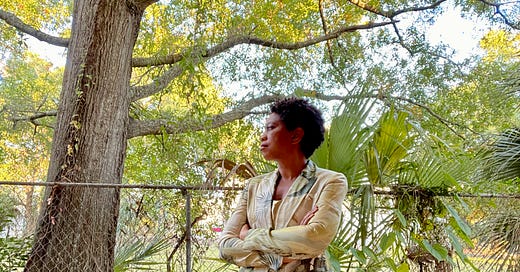




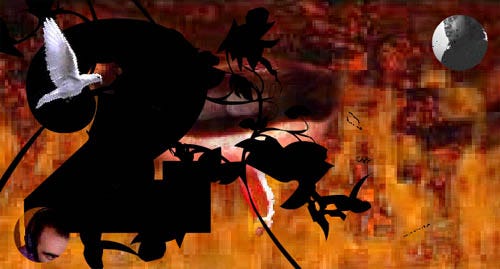
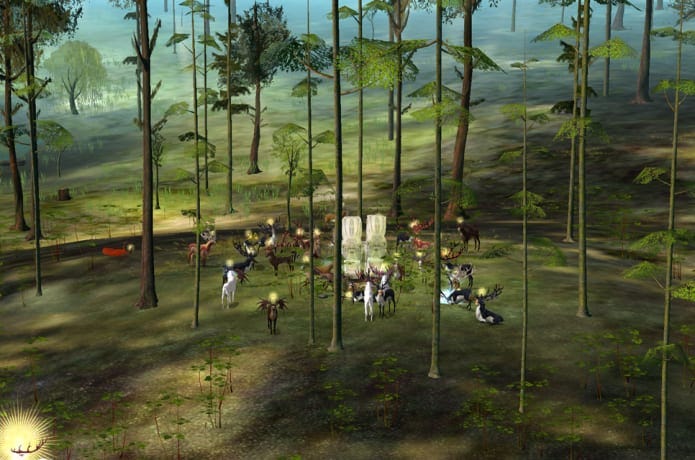
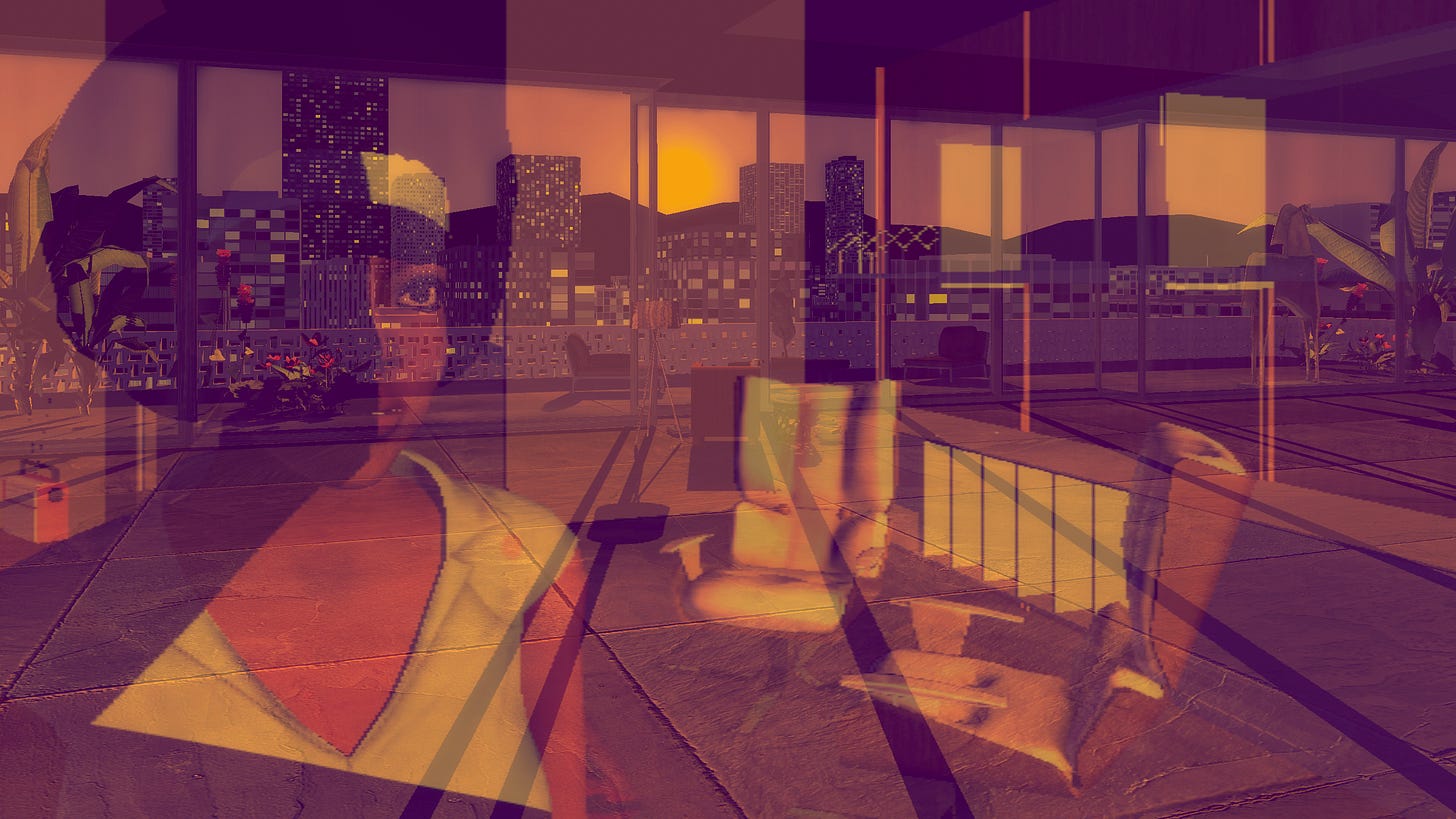
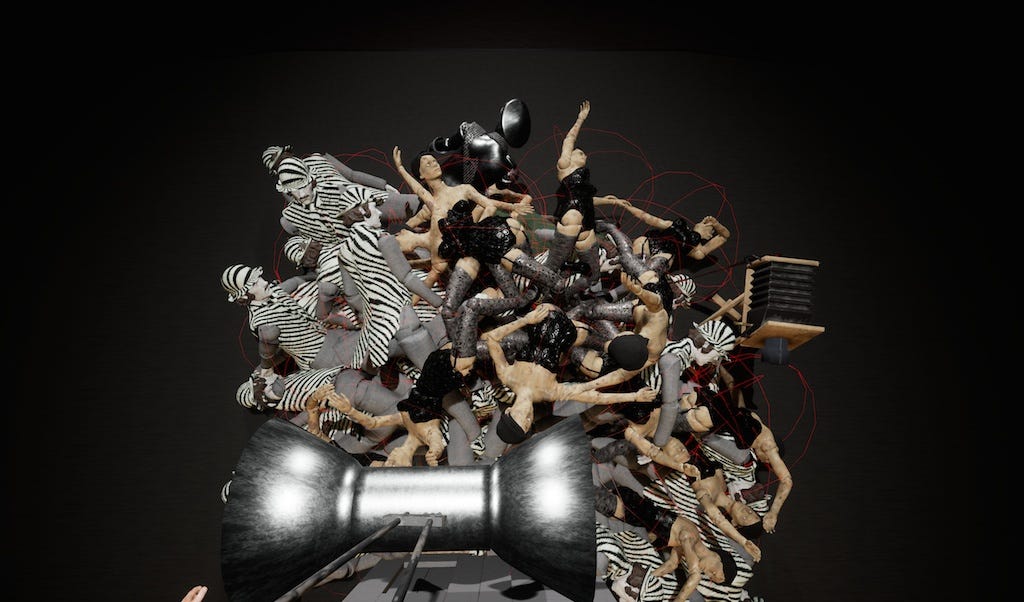
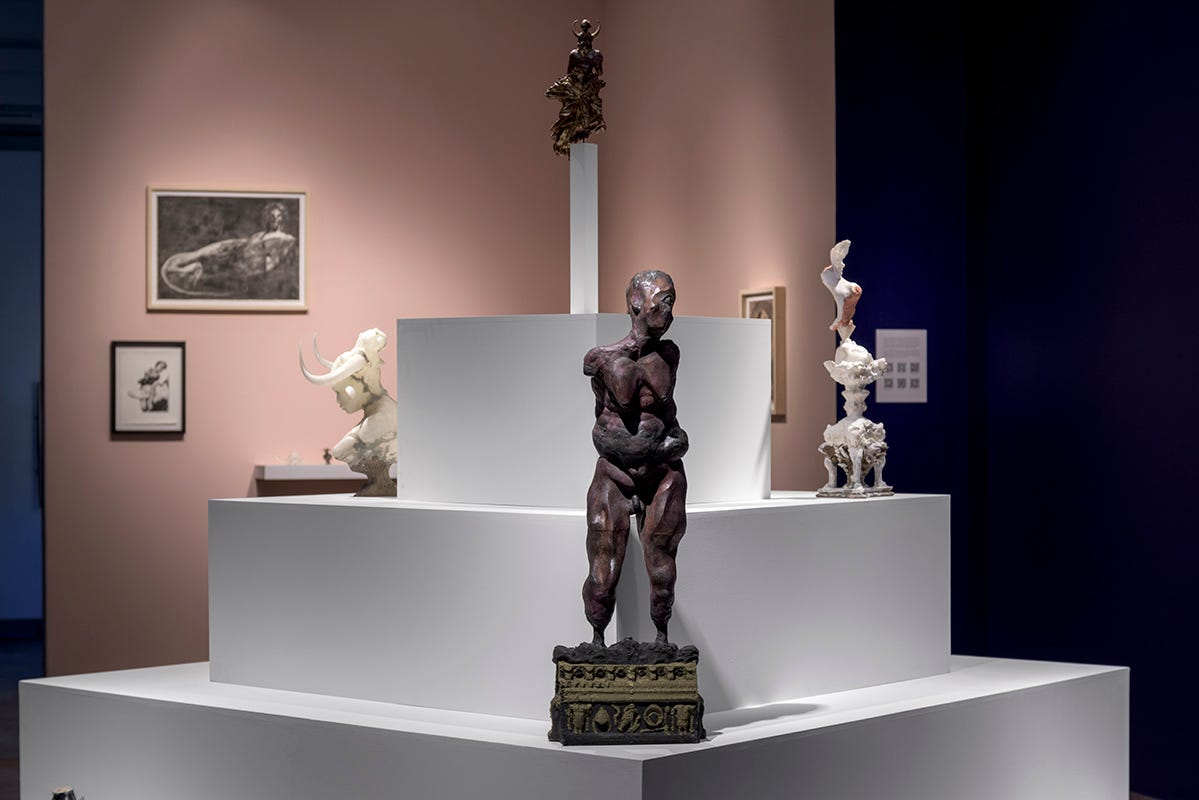






Share this post